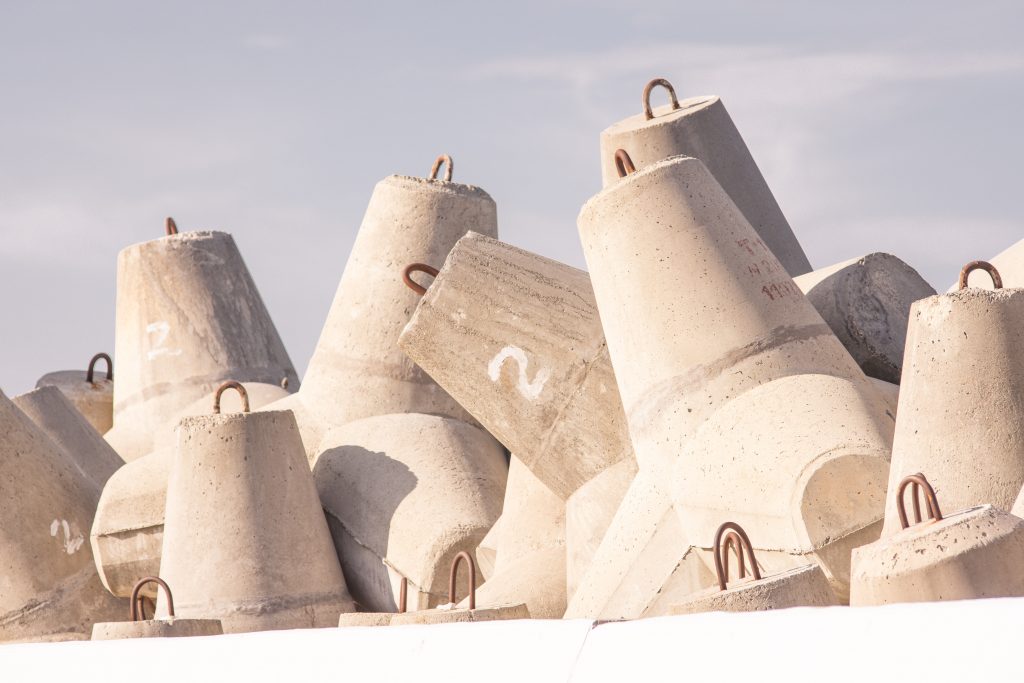BLOG
How Concrete Gets Recycled
by TRP Ready Mix on December 10, 2018
A Look at the Eco-Friendly, Cost-Effective Concrete Recycling Process
As surprising as it might be, concrete gets recycled. Instead of transporting concrete waste to landfills and paying a high price to dispose of concrete, contractors will recycle concrete from a demolition project. Recycling concrete results in significant cost savings, while also reducing the environmental footprint of concrete waste and production.
Instead of mining and transporting new aggregates for concrete production, recycled concrete can be used in its place, cutting down on energy use and fuel emissions involved in sourcing and transporting other aggregates.
Due to the environmental demand on landfills, and both the environmental and economic benefits of recycling concrete, more concrete disposal sites are opening up, and concrete contractors are adopting recycling in their operations to reduce the costs of concrete disposal.
Read more: The Latest Developments in Concrete Construction
The Concrete Recycling Process
Here is a breakdown on how to recycle concrete:
Demolition
To recycle concrete, the concrete must first be broken and removed from the existing pavement—i.e., the demolition of concrete foundations, driveways, sidewalks, and other concrete structures. Concrete recyclers will then haul concrete from a demolition site to a concrete recycling plant.
Concrete recyclers can also use a portable crusher at the demolition site. This method is more convenient than hauling concrete to a recycling plant. The crusher will be centrally located at the demolition site out of the way of traffic but in a convenient location.
Crushing
Concrete recyclers will use industrial crushing equipment with jaws and impactors to crush the concrete. It will then go through another impactor, and be screened afterward to remove dirt and to separate the crushed concrete into large and small particles (aggregate).
Contaminant Removal
Other equipment and processes may also be involved to remove contaminants and elements, such as steel reinforcement fibers, clay, wood, dirt, plastic, and organic materials. These processes include handpicking, electromagnetic separators, air separators, and water flotation separators.
If you decide to use a portable crusher at your demolition site, consider using equipment that has these element separation systems. Also, consider whether you want equipment with:
- Manual, automatic, or remote control systems;
- Separate hydraulic stands for a faster setup; and,
- Conveyors, jaws, and cones for complete processing—from demolition to finished aggregate.
Crushed concrete can then be reused as an aggregate in new concrete or in any structural layer. This reuse of concrete reduces the need for mining other aggregates such as gravel and relying on the transportation of aggregates.
When used in new concrete, the recycled crushed concrete aggregate is usually mixed with a virgin aggregate. But more often than not, recycled concrete is used as an aggregate for sub-base layers of pavement.
What Types of Concrete Can Be Recycled?
Thanks to developments in concrete recycling equipment, any type of concrete can be recycled, whether it be plain, mesh-and-dowel or continuously-reinforced concrete. The process can remove steel to reduce hand labour. There is breaking equipment for all pavement types and crushing equipment that handles steel reinforcement.
Examples of successful concrete recycling projects include:
- Jointed plain pavement;
- Jointed reinforced pavement;
- Continuously reinforced pavement; and,
- 17+-inch-thick airport pavement.
Alternative Uses for Old Concrete
Recycled concrete often has the same uses as other aggregates, such as gravel and other paving materials. Old concrete can be reused for:
Permeable Pavement
Broken concrete creates a permeable (porous) pavement surface so water can filter through and replenish groundwater instead of becoming stormwater runoff that contaminates waterways.
Base Layers for New Asphalt Pavement
Old concrete can be broken in place—in a process called rubblization—to act as a base layer for new asphalt pavement laid over it.
Utility Pipe Bedding
Underground utility line trenches are usually covered with gravel for drainage, but crushed concrete can be used in its place as a stable bed and firm foundation.
Soil Stabilization
As an aggregate sub-grade, recycled concrete can stabilize soil with its load-bearing capacity.
New Concrete
Crushed concrete can be used as an aggregate in ready-mix concrete, replacing some of the new (virgin) aggregate that is typically used.
Erosion Control
Large pieces of old concrete can help control erosion along vulnerable gullies and streambanks.
Landscaping
While gravel and river rock are commonly used as mulch, groundcover, and drainage in landscaping, crushed concrete can work just as well. Recycled concrete can also be used for paving stones, water features, retaining walls, rock walls, and underpass abutment structures.
Fill for Wire Gabions
Crushed concrete can replace gravel as fill in wire gabions—cages that act as decorative and function retaining walls and privacy screen walls.
Foundations for Coral Reefs
When carefully and strategically positioned offshore, large pieces of concrete can become the foundation for coral to build new reefs.
Disposing of Concrete Properly
Construction and demolition (C&D) waste account for about 25 percent of solid waste. And concrete makes up the most significant part of this waste—about 70 percent of C&D waste before recycling. And with the growing demand on landfills, it is more important than ever to divert this waste from landfills and dispose of concrete properly by recycling.
By doing so, you can eliminate the high cost of transporting concrete to landfills and paying for disposal (tipping costs). You can also save money by using recycled concrete instead of new aggregates in many construction and landscaping projects. This also means saving on transportation costs and reducing fuel emissions.
Read more: Green Advantages of Concrete
Recycling concrete saves money, energy, and the environment. To learn more about how to recycle concrete and where to take broken concrete, contact your local concrete suppliers. They can help you reduce your environmental footprint with concrete recycling.

